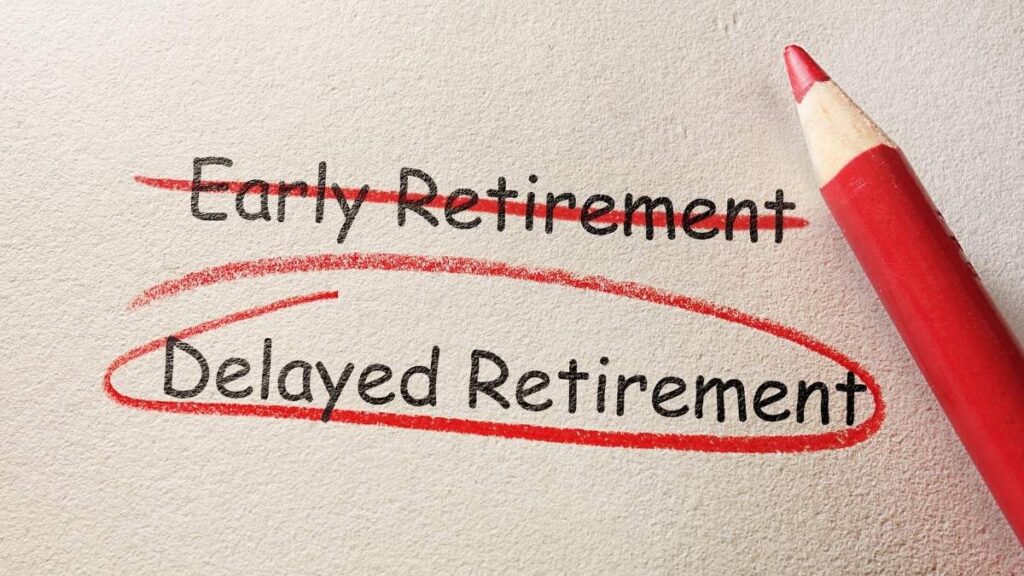Retirement is often envisioned as a new beginning, a time for personal growth and pursuing passions. For many, claiming Social Security at age 62 seems like the first chance to seize this dream. However, this appealing option is a significant financial trap.
The decision to take benefits early, while emotionally satisfying, triggers irreversible consequences that undermine long-term security.
The immediate gratification of an early check masks permanent benefit reductions and hidden costs that can last for decades, a lesson that what we ‘see’ may differ from what is actually there. This choice is often an emotional response, overlooking the profound and lasting financial implications.
The Siren Song of 62: Deconstructing the Allure of Early Retirement

The concept of retirement is deeply woven into the fabric of the modern work-life narrative, representing not merely an exit from the labor force but a transition to a new phase of existence.
This vision is powerful and universally appealing, captured in sentiments that frame retirement as “the beginning of the open highway” or a state of “bliss” where a new kind of life, full of awaited experiences, can finally commence.
For many, the earliest possible moment to seize this dream—age 62, the first point of eligibility for Social Security retirement benefits—beckons with an almost irresistible allure.
However, beneath this appealing surface lies a complex financial reality that is often misunderstood or underestimated.
The decision to claim Social Security benefits at 62, while emotionally satisfying in the short term, frequently initiates a cascade of irreversible financial consequences that can undermine the very security and freedom that retirement is meant to provide.
This decision point represents one of the most significant financial traps for pre-retirees.
The Unforgiving Math: A Permanent Haircut on Your Biggest Retirement Asset

At the core of the retirement claiming decision is a set of immutable mathematical rules established by the Social Security Administration (SSA). These rules are not suggestions; they are the rigid framework that determines the size of what is, for most Americans, their largest and most reliable retirement asset.
Understanding this framework is not merely an academic exercise; it is the essential foundation for comprehending the permanent financial trade-offs involved.
The Foundation: Full Retirement Age (FRA)
The entire Social Security benefit calculation pivots on the concept of Full Retirement Age (FRA).
This is the age at which an individual is entitled to receive 100% of their Primary Insurance Amount (PIA), which is the benefit amount calculated from their lifetime earnings history.

Due to legislation passed in 1983 to bolster the system’s long-term solvency, the FRA has been gradually increasing. For anyone born between 1943 and 1954, the FRA is 66.
For those born after, it increases by two months per year, ultimately settling at age 67 for all individuals born in 1960 or later. For the vast majority of individuals currently contemplating retirement, age 67 is the benchmark for receiving their full, unreduced benefit.
The Age 62 Reduction: A Permanent 30% Cut

The SSA allows individuals to claim retirement benefits as early as age 62, but this option comes with a significant and permanent reduction in benefits.
The reduction is calculated on a monthly basis to ensure actuarial neutrality, meaning that, on average, the total lifetime benefits paid are roughly the same regardless of when a person claims, based on average life expectancies.
The formula is precise: the benefit is reduced by 5/9 of one percent for each of the first 36 months claimed before FRA, and then by 5/12 of one percent for each additional month.
The reduction is calculated as follows:
- First 36 months: 36×(5/9×0.01)=0.20 (a 20% reduction)
- Next 24 months: 24×(5/12×0.01)=0.10 (a 10% reduction)
- Total Reduction: 0.20+0.10=0.30 (a 30% reduction)
This 30% reduction is not temporary; it is a permanent “haircut” applied to the benefit for the rest of the recipient’s life.
To illustrate, a worker entitled to a PIA of $1,000 per month at their FRA of 67 would receive only $700 per month if they choose to claim at age 62.
This reduction flows through to all future cost-of-living adjustments (COLAs), meaning the dollar gap between the reduced benefit and the full benefit widens over time.
The Power of Delay: Earning Delayed Retirement Credits (DRCs)

Conversely, the SSA system provides a powerful incentive for patience. For every month an individual delays claiming benefits beyond their FRA, their benefit amount permanently increases.
These increases are known as Delayed Retirement Credits (DRCs). For individuals born in 1943 or later, the credit accrues at a rate of 8% per year, or 2/3 of one percent per month. These credits can be earned up until age 70, at which point the benefit amount is maximized and no further credits can be accrued.
By delaying claiming from an FRA of 67 to age 70, an individual earns three full years of DRCs. This results in a benefit that is 24% higher than their PIA (3 years×8%/year).
Therefore, the maximum possible benefit an individual can receive is 124% of their full retirement amount. This creates a remarkable 77% swing in potential monthly income between the earliest claiming age (62, at 70% of PIA) and the latest (70, at 124% of PIA).
The Critical Impact on Spouses and Survivors

The consequences of this decision extend beyond the individual claimant, with profound implications for their spouse. A lower-earning spouse may be entitled to a spousal benefit of up to 50% of the higher-earning spouse’s PIA, but this amount is also reduced if either spouse claims benefits early.
Even more critically, the claiming decision of the higher earner dictates the size of the survivor benefit. When one spouse dies, the surviving spouse is typically entitled to receive the greater of their own benefit or 100% of the deceased spouse’s benefit.
If the higher-earning spouse claimed early at 62, they locked in a permanently reduced benefit. This action directly and permanently reduces the potential income stream for their surviving partner, who may have to live on that smaller benefit for many years.
This transforms the claiming decision from a purely individual calculation into a crucial element of legacy planning and spousal protection.
To quantify these trade-offs, the following table illustrates the lifetime income differential based on the three key claiming ages. It assumes a baseline PIA of $1,976, the estimated average monthly benefit for retired workers in January 2025 after the 2.5% COLA is applied.
| Metric | Claiming at Age 62 | Claiming at Age 67 (FRA) | Claiming at Age 70 |
| Monthly Benefit | $1,383 (70% of PIA) | $1,976 (100% of PIA) | $2,450 (124% of PIA) |
| Annual Benefit | $16,596 | $23,712 | $29,400 |
| Cumulative Payout by Age 80 | $315,324 | $308,256 | $294,000 |
| Cumulative Payout by Age 85 | $398,304 | $426,816 | $441,000 |
| Cumulative Payout by Age 90 | $481,284 | $545,376 | $588,000 |
| Breakeven Age vs. Age 62 | N/A | ~78 years | ~80.5 years |
The First Hidden Cost: Bridging the Treacherous Healthcare Gap (Ages 62-65)

While the mathematical reduction in benefits is the most direct consequence of claiming Social Security early, it is often the first hidden cost—health insurance—that delivers the most immediate and painful financial shock.
The decision to leave the workforce at 62, often severing ties with employer-sponsored health coverage, thrusts an individual into a three-year chasm before Medicare eligibility begins at age 65.
Bridging this healthcare gap requires securing private insurance, which, for those in their early 60s, comes at a staggering cost that can neutralize or even exceed the value of their early Social Security check.
Based on 2025 projections derived from Kaiser Family Foundation data, the national average monthly premium for a benchmark “Silver” ACA plan is estimated to be $1,117.88 for a 62-year-old.
This cost escalates to $1,148.45 for a 63-year-old and $1,166.67 for a 64-year-old. It is crucial to note that these are national averages; premiums in high-cost states can be substantially higher.
For instance, average plan costs in states like Alaska and West Virginia can be thousands of dollars more per year than the national average.
The following table provides a stark visualization of this “healthcare tax” on early Social Security benefits, demonstrating how little disposable income remains after securing necessary health coverage.
| Age | Average Reduced Monthly SS Benefit | Estimated Average Monthly ACA Premium (2025) | Net Monthly Income (Benefit – Premium) | Healthcare Premium as % of Gross SS Benefit |
| 62 | $1,383 | $1,118 | $265 | 80.8% |
| 63 | $1,464 | $1,148 | $316 | 78.4% |
| 64 | $1,545 | $1,167 | $378 | 75.5% |
The Slow Burn of Inflation: How a Smaller Check Gets Eaten Alive

Beyond the immediate shock of healthcare costs, early retirees face a more insidious, long-term threat: the corrosive power of inflation. Inflation acts as a silent tax on retirees, systematically eroding the purchasing power of their income and savings over time.
While this risk affects all retirees, it disproportionately harms those who enter retirement with a smaller income base, a direct consequence of claiming Social Security benefits early.
The initial 30% reduction is not a one-time event; it is the starting point of a compounding disadvantage that widens with every passing year in an inflationary environment.
Recent economic data highlights the persistence of this threat. In January 2025, the Consumer Price Index (CPI) registered a 3% annual increase, a rate that remains stubbornly above the Federal Reserve’s 2% target.
More concerning for seniors, the costs of essential goods and services that constitute a large portion of their budgets have risen even faster.
Shelter costs were up 4.4% year-over-year, and the cost of healthcare services rose 2.7%. These are not discretionary expenses; they are fundamental to a retiree’s well-being, and their escalating costs place immense pressure on fixed incomes.
This is where the compounding disadvantage of claiming early becomes critically important. COLAs are applied as a percentage to an individual’s current benefit amount.
Therefore, a smaller initial benefit results in a smaller absolute dollar increase from each COLA. This creates a purchasing power gap between the early claimer and the full-age claimer that widens every single year.
Consider the 2.5% COLA for 2025 applied to our two hypothetical retirees:
- Age 62 Claimer: A 2.5% COLA on a monthly benefit of $1,383 yields an increase of $34.58.
- Age 67 Claimer: A 2.5% COLA on a monthly benefit of $1,976 yields an increase of $49.40.
While a difference of less than $15 per month may seem trivial, its effect is cumulative.
Over a 25-year retirement, this small monthly divergence in raises compounds into a substantial and ever-growing chasm in real, spendable income. Most individuals perceive the 30% reduction at age 62 as a fixed, static penalty.
The Longevity Dilemma: Planning for a 30-Year Problem with a Short-Term Solution

Perhaps the most profound strategic error in claiming Social Security at 62 is the fundamental mismatch between the solution (short-term income) and the problem it is meant to solve (funding a potentially very long retirement).
The decision is often made with a focus on the immediate future, yet its consequences play out over a time horizon that most people systematically underestimate.
This failure to grasp the reality of modern longevity leads individuals to cripple their single most effective defense against the greatest financial risk they face: outliving their money.
This reality introduces the concept of longevity risk: the danger that an individual will exhaust their financial resources because they live longer than anticipated. A longer life is a gift, but it is an expensive one.
It means more years of covering essential expenses, greater cumulative exposure to the erosive effects of inflation, and a higher probability of incurring significant late-in-life healthcare and long-term care costs.
The Working Retiree’s Penalty Box: The Social Security Earnings Test

A common strategy among those who opt for early retirement is to supplement their reduced Social Security check with part-time work. This “phased retirement” approach seems logical, offering a gradual transition out of the full-time workforce while establishing an early income stream.
However, this plan often collides with a poorly understood provision of Social Security law: the Retirement Earnings Test (AET).
For those who claim benefits before their Full Retirement Age and continue to work, the earnings test can significantly reduce or even entirely eliminate their Social Security payments, creating a frustrating scenario where the intended income boost fails to materialize.
The rules of the earnings test are specific and tied to one’s age and income. For 2025, the regulations are as follows:
- If you are under Full Retirement Age for the entire year: The annual earnings limit is $23,400. For every $2 earned above this limit, the SSA will withhold $1 from your benefit payments.
- In the year you reach Full Retirement Age: A more generous limit applies to the months before your birthday. For 2025, this limit is $62,160. For every $3 earned above this amount, the SSA will withhold $1 from your benefits.
Crucially, the moment an individual reaches their Full Retirement Age, the earnings test vanishes. From the month of FRA onward, one can earn any amount of money without any reduction in their Social Security benefits.
It is important to note that benefits withheld due to the earnings test are not permanently lost. Upon reaching FRA, the SSA will recalculate the individual’s benefit amount, giving them credit for the months in which benefits were withheld.
This adjustment effectively raises their future monthly payments slightly. However, this complexity often obscures a more critical point: the recalculation does not erase the initial, permanent reduction taken for claiming before FRA. The individual has still locked in a lower base benefit for the rest of their life.
Beyond the Numbers: A Strategic Framework for Your Claiming Decision

The evidence presented throughout this report builds an overwhelming case against the default action of claiming Social Security at age 62.
The permanent benefit reduction, the hidden costs of pre-Medicare health insurance, the compounding erosion of inflation, the disregard for longevity risk, and the penalties of the earnings test combine to form a formidable financial trap.
Acknowledging this, a prudent retirement strategy must therefore begin from a different premise.
The “Base Case”: Delay as the Default Strategy

Based on a rigorous analysis of the financial mathematics and risk factors, the optimal strategy for the majority of individuals should be to delay claiming Social Security benefits until at least Full Retirement Age (67), and ideally to the maximum age of 70.
This approach should be considered the “base case” or default plan. It is the single most powerful lever an individual can pull to increase their guaranteed, inflation-adjusted, lifetime income, thereby providing the strongest possible foundation for financial security.
Deviating from this strategy should be a deliberate choice based on a clear-eyed assessment of specific, compelling personal circumstances, not a passive drift into the earliest available option.
A Decision-Making Matrix: When to Consider an Exception

While delaying is the optimal path for most, there are legitimate situations where an earlier claim might be warranted. The decision to deviate from the base case should be made only after carefully considering the following factors:
Health and Longevity: A clinically diagnosed, life-limiting health condition that results in a significantly below-average life expectancy is one of the few clear-cut reasons to consider claiming early.
Spousal Considerations: A couple’s claiming strategy should be coordinated. Often, the optimal approach involves the higher-earning spouse delaying until age 70 to maximize their benefit, which in turn maximizes the potential survivor benefit for the lower-earning spouse.
Alternative Income Sources: If an individual possesses substantial alternative income streams—such as a defined-benefit pension or a very large investment portfolio ($2M+)—that can comfortably fund the “bridge” period from retirement to age 70, the need to maximize Social Security is lessened.
These resources must be sufficient to cover all living expenses and the high cost of healthcare without exposing the portfolio to excessive withdrawal rates or sequence of returns risk.
Immediate and Unavoidable Financial Need: In cases of involuntary job loss in one’s early 60s coupled with insufficient savings to cover basic needs, claiming Social Security may be a last resort.
This is a decision born of necessity, not optimization, and it underscores the importance of building a robust emergency fund prior to retirement.
The “Do-Over” Button: Suspending Benefits

For those who claim early and later regret the decision—perhaps because they returned to work or their financial situation improved—the SSA offers a valuable option. Upon reaching Full Retirement Age, an individual can request to voluntarily suspend their benefit payments.
While benefits are suspended, they will cease receiving checks, but they will begin earning Delayed Retirement Credits at a rate of 8% per year. Payments will automatically resume at age 70 at a new, higher rate.
This “do-over” allows individuals to partially reverse the negative consequences of an early claim and salvage a higher lifetime income.
A Call to Action: Plan, Don’t Default
The decision of when to claim Social Security is one of the most consequential financial choices of a lifetime, with implications that will last for decades. It should not be a passive default but an active, informed, and strategic decision.
Individuals approaching retirement should engage in rigorous planning. This includes using the free, personalized tools available, such as the Social Security Retirement Estimator from the SSA, as well as sophisticated retirement income calculators offered by financial institutions like TIAA and Vanguard.
Ultimately, securing a successful retirement is the culmination of decades of preparation.
As financial planner Benjamin Franklin advised, a happy retirement requires one to “know how much is enough, build assets, and cultivate passions”. The claiming decision is the final, critical step in that process. To treat it lightly is to risk undermining a lifetime of work and saving.
As another expert wisely noted, “A goal without a plan is just a wish”. The goal of a secure and prosperous retirement cannot be left to chance; it must be built upon a foundation of careful analysis and deliberate action.
The wisdom of financial advisors is clear: “chart your course with care, and never retire without first attaining your financial freedom!”. Avoiding the 62 vs. 67 trap is the first and most critical step in charting that course.

